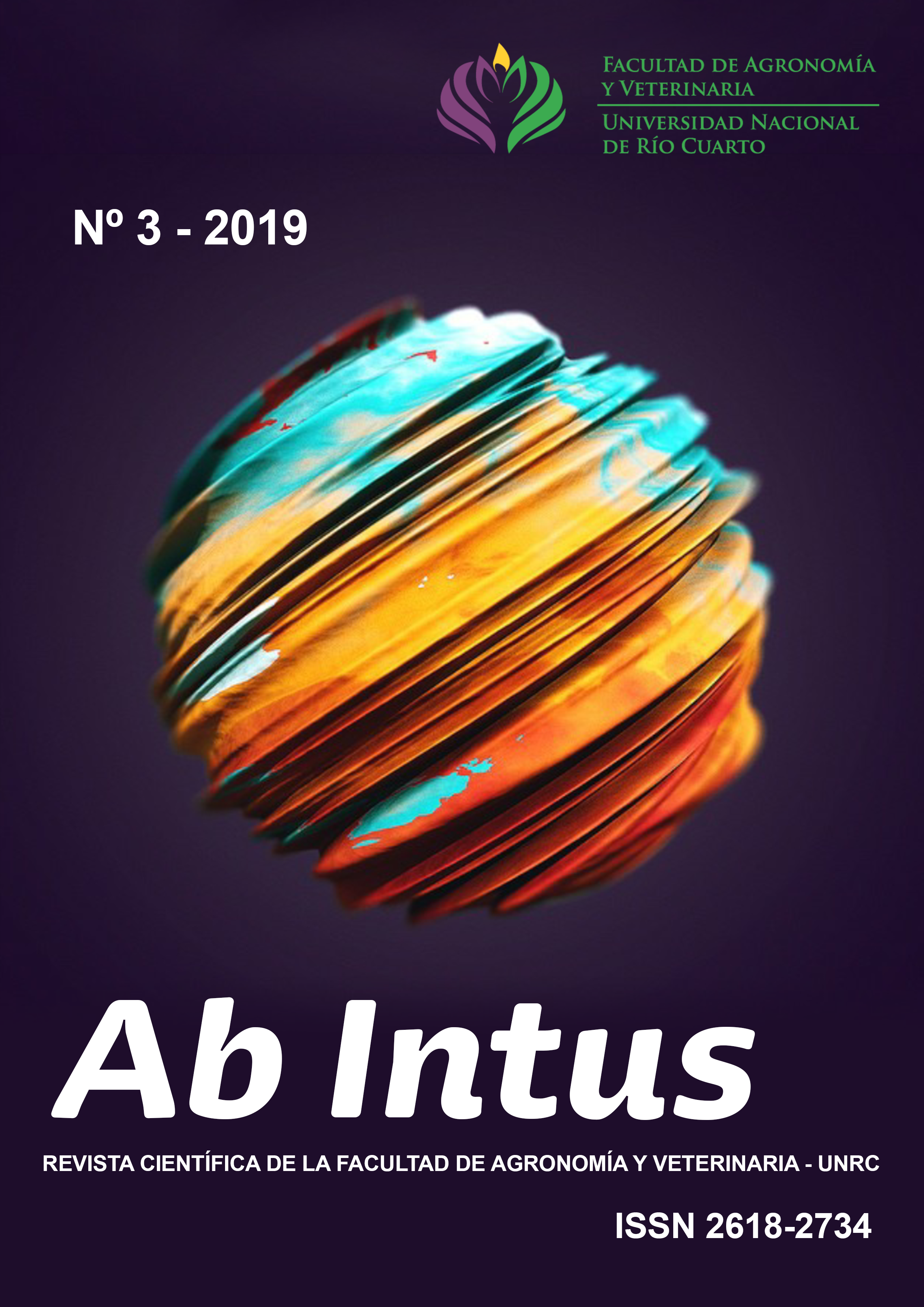Ver ítem
- xmlui.general.dspace_homeCentros Regionales y EEAsCentro Regional Santa FeEEA RafaelaArtículos científicosxmlui.ArtifactBrowser.ItemViewer.trail
- Inicio
- Centros Regionales y EEAs
- Centro Regional Santa Fe
- EEA Rafaela
- Artículos científicos
- Ver ítem
Distribución temporo-espacial de brucelosis en médicos veterinarios clínicos de bovinos
Resumen
El objetivo de este trabajo fue evaluar el efecto del momento de graduación, los años de graduación y la región (dentro de la Provincia de Santa Fe) sobre el riesgo de presentar brucelosis en Médicos Veterinarios de bovinos. Se aplicó una encuesta a veterinarios rurales mediante un cuestionario estructurado que fue respondido en forma anónima por 464 profesionales. Se realizaron tres estudios: 1) se compararon las cohortes de veterinarios graduados de uno
[ver mas...]
El objetivo de este trabajo fue evaluar el efecto del momento de graduación, los años de graduación y la región (dentro de la Provincia de Santa Fe) sobre el riesgo de presentar brucelosis en Médicos Veterinarios de bovinos. Se aplicó una encuesta a veterinarios rurales mediante un cuestionario estructurado que fue respondido en forma anónima por 464 profesionales. Se realizaron tres estudios: 1) se compararon las cohortes de veterinarios graduados de uno a 10, 11 a 20 y más de 20 años previos a la encuesta, computando sólo los nuevos casos de brucelosis registrados durante esos períodos; 2) se compararon las regiones de ejercicio profesional definidas de acuerdo al Plan Superador de Brucelosis Bovina del SENASA, y 3) se combinaron las variables años de graduados y región. El análisis estadístico incluyó el cálculo del Riesgo Relativo (RR) y regresión logística. La tasa de incidencia acumulada (TIA) de brucelosis fue del 25,6%, con una mayor frecuencia en los inicios de la actividad profesional y en veterinarios graduados hacía más tiempo (P<0,001). Los veterinarios que trabajaban en la Región Centro-Sur tuvieron una TIA de brucelosis en sus primeros 10 años de trabajo del 22,9%, significativamente superior a la de sus colegas que ejercían en la región Norte (TIA= 11,6%) (P= 0,004). La tendencia de los casos a agruparse en los primeros años de actividad profesional se observó en ambas regiones, aunque con mayor intensidad en la Región Centro-Sur (P< 0,001). Se concluye que la región de ejercicio profesional y las variables temporales (época de graduación y años de graduado) están indudablemente ligadas entre sí.
[Cerrar]
The aim of this work was to evaluate the effect of the graduation moment, years of graduation and region (within the Province of Santa Fe) on the risk of brucellosis in veterinarians working in general practices with bovines. Data was collected by a survey using a structured questionnaire which was answered anonymously by 464 professionals. Two studies were conducted: 1) the cohorts of veterinarians graduated from one to 10, 11 to 20 and more than 20
[ver mas...]
The aim of this work was to evaluate the effect of the graduation moment, years of graduation and region (within the Province of Santa Fe) on the risk of brucellosis in veterinarians working in general practices with bovines. Data was collected by a survey using a structured questionnaire which was answered anonymously by 464 professionals. Two studies were conducted: 1) the cohorts of veterinarians graduated from one to 10, 11 to 20 and more than 20 years prior to the survey were compared, considering only the new cases of brucellosis recorded during those periods; 2) the regions where the veterinarians performed their practice, defined according to the Plan Superador de Brucelosis Bovina from SENASA, were compared. Statistical analysis included the Relative Risk estimation (RR) and logistic regression. The cumulative incidence rate (CIR) of brucellosis was 25.6%, with a higher frequency at the beginning of the professional activity and in veterinarians graduated more time ago (P<0.001). The veterinarians who worked in the Center-South Region had a CIR of brucellosis in their first 10 years of work of 22.9%, significantly higher than their colleagues who practiced in the North region (CIR = 11.6%) (P=0.004). The tendency to concentrate the cases in the first years of professional activity was observed in both regions, although with greater intensity in the Center-South Region (P<0.001). We concluded that the region of professional practice and the temporary variables (time of graduation and years of graduation) are undoubtedly linked to each other.
[Cerrar]

Fuente
Ab Intus 2 (3) : 50-55 (July 2019)
Fecha
2019
Editorial
Facultad de Agronomía y Veterinaria, Universidad Nacional de Río Cuarto
ISSN
2618-2734
Formato
pdf
Tipo de documento
artículo
Palabras Claves
Derechos de acceso
Abierto
 Excepto donde se diga explicitamente, este item se publica bajo la siguiente descripción: Creative Commons Attribution-NonCommercial-ShareAlike 2.5 Unported (CC BY-NC-SA 2.5)
Excepto donde se diga explicitamente, este item se publica bajo la siguiente descripción: Creative Commons Attribution-NonCommercial-ShareAlike 2.5 Unported (CC BY-NC-SA 2.5)


